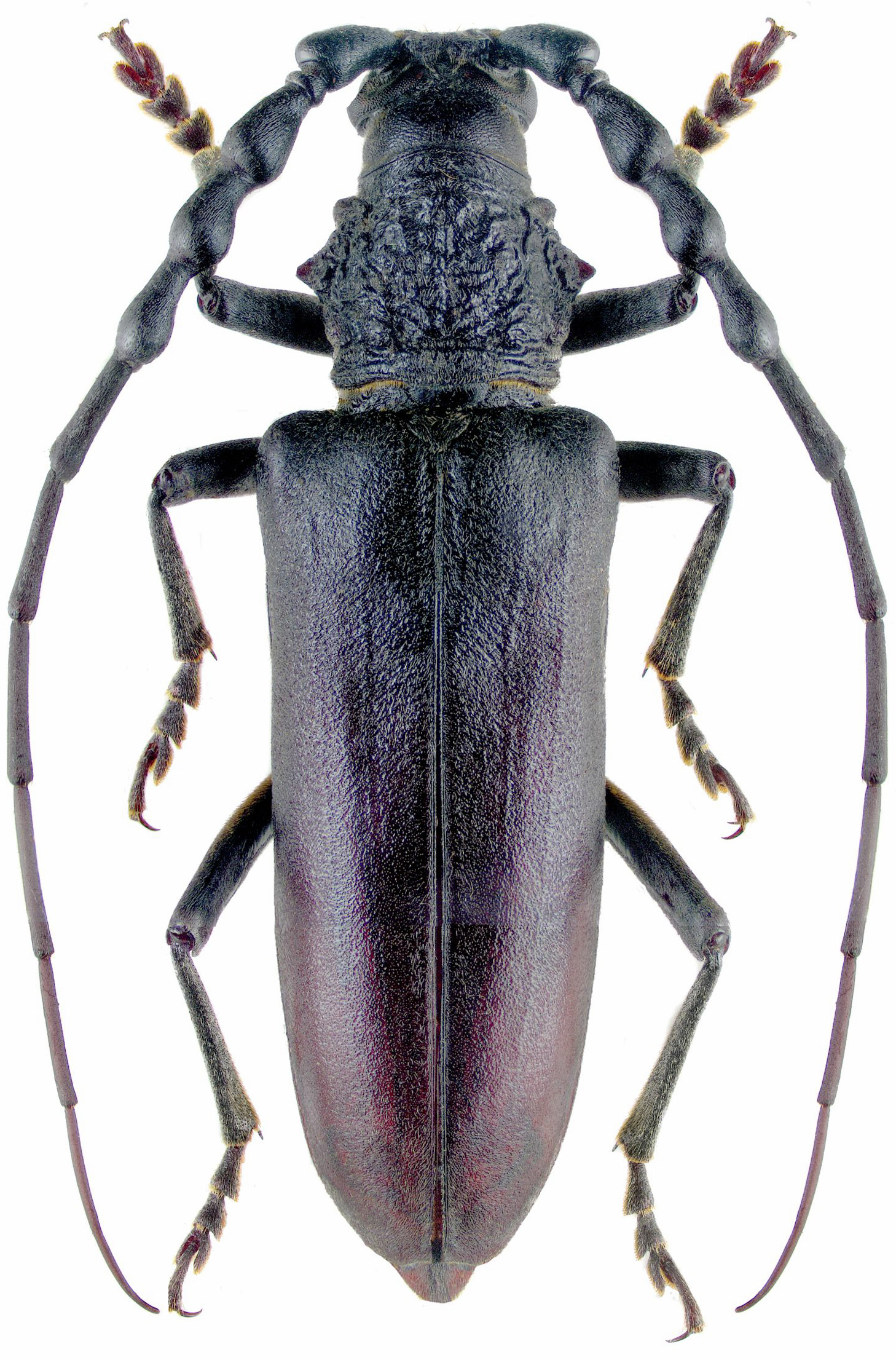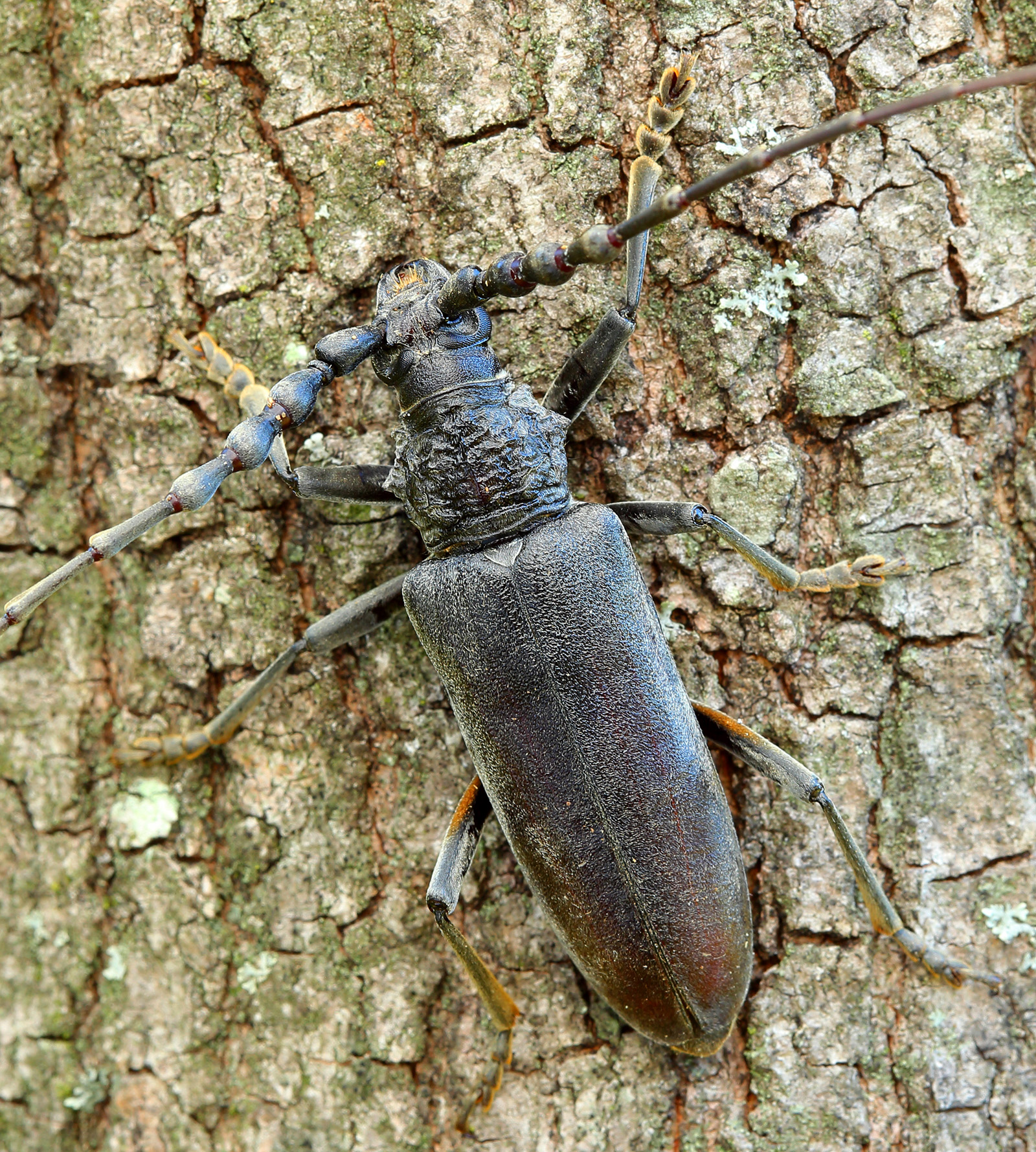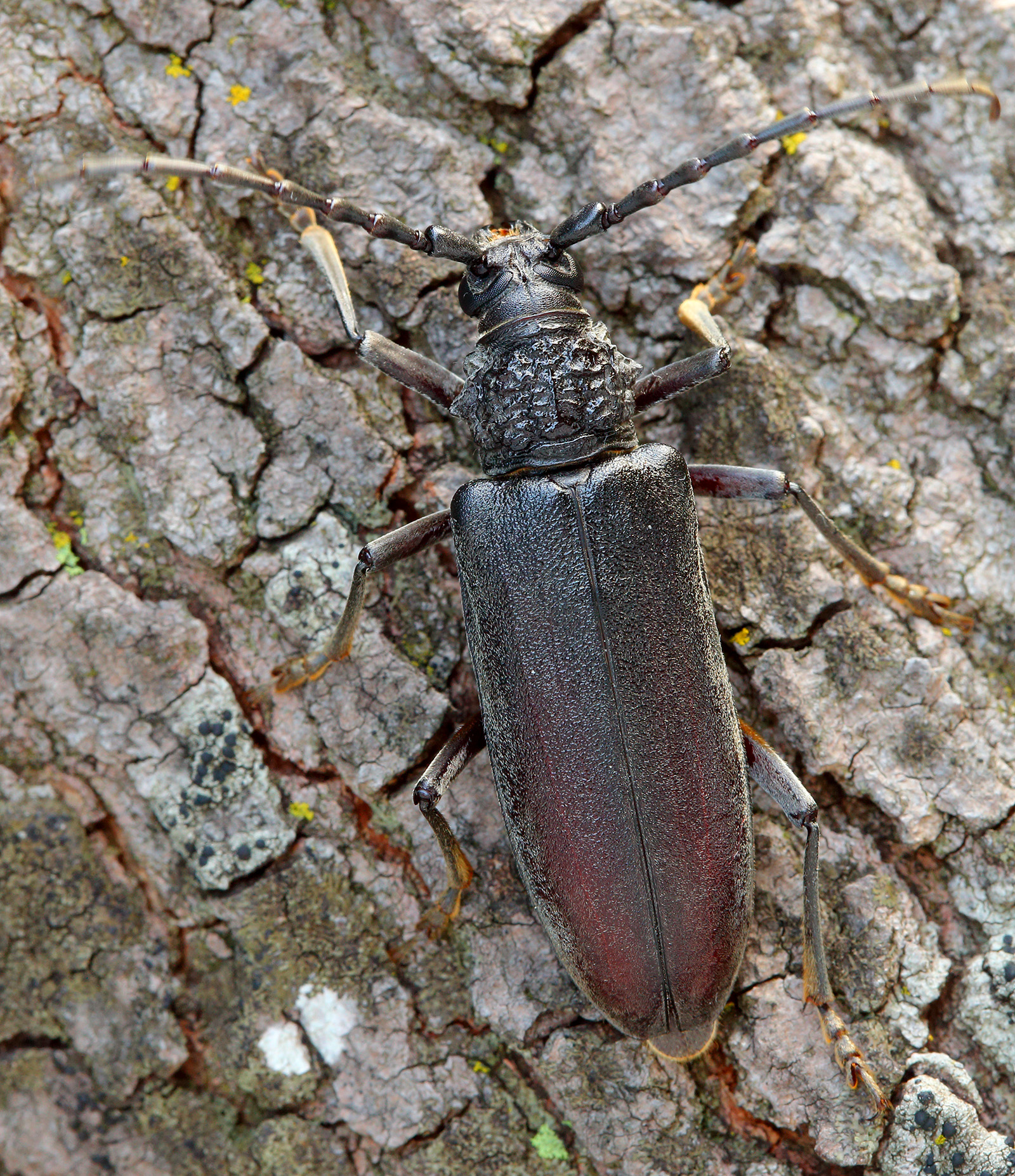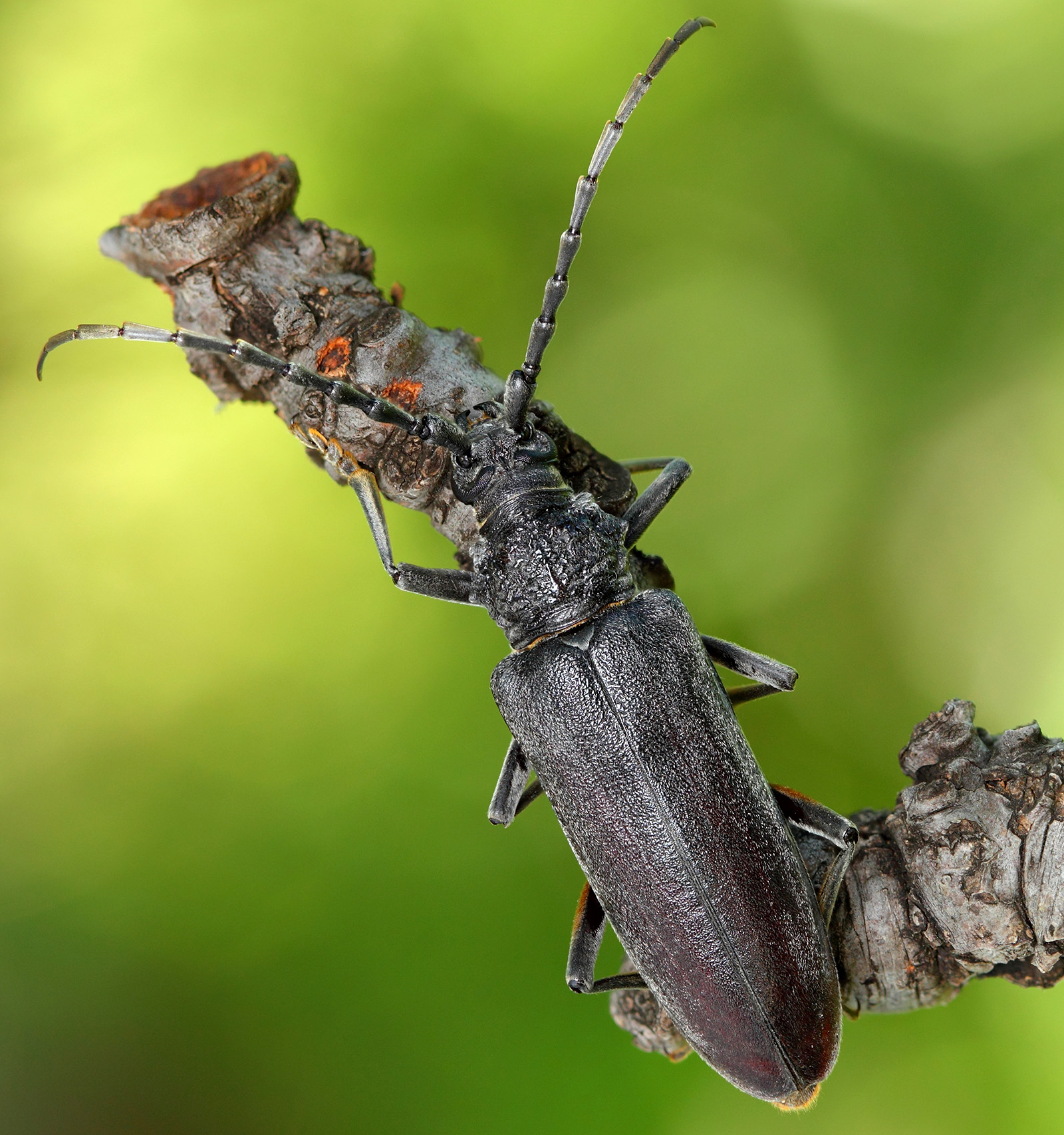Cerambyx carinatus, a thermophilic species occuring in South and South-Eastern Europe, has been described from Dalmatia as Hammaticherus carinatus by Heinrich Carl Küster in 1845 [▽].
The species often inhabits unmaintained orchards and gardens, where its larvae develop in fruit trees (prefers Prunus, but also attacks Pyrus, Malus or Ceratonia).
Life-cycle at least two years. Adults can be found on the host trees and sometimes also on blossoming trees such as Sorbus, they are also attracted by light.
| Body length: | 30 - 45 mm |
| Life cycle: | 2 - 3 years |
| Adults in: | June - August |
| Host plant: | Prunus, Pyrus, Malus, Ceratonia |
| Distribution: | Albania[✱], Bosnia and Herzegovina, Bulgaria, Crete, Croatia, Macedonia, Malta, Montenegro, Serbia, Turkey |
The mounted male beetle was captured in Zadar environs (Zadar county, Croatia) in summer 1966. The living beetles were photographed in Smokvica Krmpotska environs (Novi Vinodolski municipality, Primorje-Gorski Kotar county, Croatian Littoral region, Croatia)
on on June 27, 2018.
Collected by Peter Schurmann and Nikola Rahmé
[▽]
Küster H.C.:
Die Käfer Europa's. Nach der Natur beschrieben. Mit Beiträgen mehrerer Entomologen.
Nürnberg, Bauer & Raspe 2: № 1-100, 1845.
[download  ]
]
[✱]
Kovács T.:
Three longhorn beetles new to the fauna of Albania (Coleoptera: Cerambycidae).
Folia Historico-Naturalia Musei Matraensis 39: 53-54, 2015.
[download  ]
]





